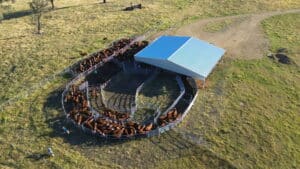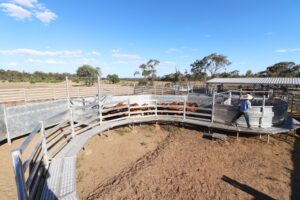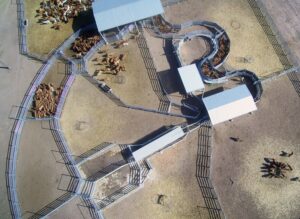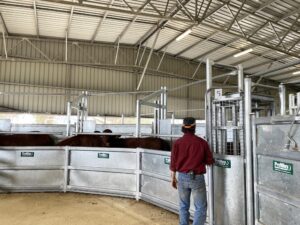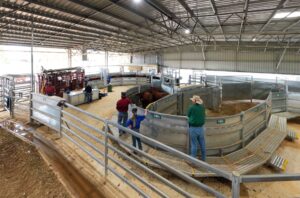Managing cattle efficiently and safely is crucial for any successful livestock operation. At ProWay Livestock Equipment, we understand the unique challenges faced by Australian cattle farmers. With over 20 years of experience, our custom-tailored livestock handling solutions are designed to boost efficiency, profitability, and safety. Here are some essential tips to maximise cattle handling profitability through effective management practices.
1. Invest in High-Quality Handling Equipment
The Importance of Quality: Investing in high-quality cattle handling equipment is one of the most effective ways to enhance profitability. Durable, well-designed equipment reduces the risk of injury to both animals and handlers, minimises stress, and improves overall handling efficiency.
ProWay Solutions: At ProWay, our cattle handling equipment is built to last and tailored to meet your specific needs. Our solutions include:
- Cattle Yards: Designed for optimal safety and efficiency during procedures such as vaccinations, tagging, and health checks.
- Loading Ramps: Ensuring safe and stress-free loading and unloading of cattle.
- Drafting Facilities: Streamlining the sorting process to save time and labour costs.
2. Understand and Utilise Cattle Behaviour
Natural Instincts: Understanding cattle behaviour and natural instincts is key to efficient handling. Cattle are herd animals with a strong flight zone and point of balance. Using these natural tendencies can significantly reduce stress and improve handling efficiency.
Practical Tips:
- Flight Zone and Point of Balance: Cattle will move forward when the handler stands behind the point of balance (located at the shoulder) and will back up if the handler stands in front of it.
- Calm Handling: Calm cattle are easier to move. Avoid loud noises and sudden movements to keep the animals relaxed.
- Use of Curved Races: Curved races take advantage of cattle’s natural tendency to follow curved paths, making them more willing to move forward.
3. Design Efficient Handling Facilities
Optimal Layout: An efficient handling facility layout can dramatically improve cattle flow and reduce handling time. Well-designed facilities ensure smooth transitions between different handling tasks and minimise the need for excessive movement or re-handling.
Key Considerations:
- Flow: Design your facility to facilitate a smooth, one-way flow of cattle. Avoid sharp turns and bottlenecks that can cause animals to balk.
- Safety: Include features such as non-slip flooring, solid sides to reduce distractions, and manways for safe handler access.
- Flexibility: Customise your facility to accommodate various tasks, from routine health checks to loading for transport.
4. Implement Regular Maintenance and Training
Maintenance: Regular maintenance of your handling equipment ensures it remains in optimal working condition, reducing the risk of breakdowns and accidents. Scheduled checks and timely repairs can prevent costly downtime and prolong the lifespan of your equipment.
Training: Proper training for handlers is crucial. Well-trained staff can handle cattle more efficiently, reducing stress and the risk of injury. Invest in training programs that cover:
- Animal Behaviour: Understanding cattle instincts and how to use them to your advantage.
- Safe Handling Techniques: Best practices for moving, restraining, and working with cattle.
- Equipment Use: Proper use and maintenance of handling equipment.
5. Monitor and Evaluate Performance
Data Collection: Regularly monitoring and evaluating your handling processes can identify areas for improvement. Collect data on key performance indicators such as handling time, injury rates, and stress levels.
Continuous Improvement: Use the data to implement changes and track the impact of these adjustments. Continuous improvement helps optimise efficiency and profitability over time. Engaging with feedback from staff and industry experts can also provide valuable insights.
Maximising cattle handling profitability requires a combination of high-quality equipment, understanding of cattle behaviour, efficient facility design, regular maintenance, and ongoing training. At ProWay Livestock Equipment, we are dedicated to providing custom-tailored solutions that enhance the efficiency, safety, and profitability of your cattle operation.
By implementing these effective management practices, you can ensure a smoother, more productive handling process that benefits both your cattle and your bottom line. For more information on our products and how we can support your operation, visit our website.
Investing in the right equipment and practices today will pay off in the long run, making your cattle handling operation more profitable and sustainable.

